The latest statistics on the size of the school population from the 2021 January School Census show that the school population increased by 0.2% compared to the previous year as a population bulge works its way through the system, particularly in the secondary sector.
But beneath the headline, numbers of pupils coming into Reception are falling. Moreover, they will continue to do so because the birth rate has fallen substantially.
Between the start of Reception and Year 11, some pupils join or leave the state-funded school system in England.
In this blogpost, we use data from School Census to examine these movements before and during the pandemic. Since the pandemic started, fewer pupils have joined the state-funded school system.
Data
We use data from the Autumn School Census, taken in October each year, from 2014 to 2020. In principle, this is a complete record of all pupils on roll in state-funded schools, including special schools, pupil referral units and alternative provision free schools and academies. Most non-maintained special schools also submit it.
We summarise the number of pupils who join or leave the system. A joiner is defined as a pupil who was not included in the previous Autumn School Census. A leaver is defined as a pupil who was not included in the subsequent Autumn School Census.
The analysis is restricted to pupils of compulsory school age, which we define as Reception to Year 11.
Sources and destinations of joiners and leavers
Pupils join the system due to migration (including from other countries in the UK), moving from the independent sector (including independent AP and special schools) or other alternative provision funded by the local authority [2], or returning from elective home education.
The destinations of leavers are the same: migration, independent sector, local authority alternative provision and elective home education. In some rare and tragic cases, death may be the reason.
Sources and destinations are not recorded in School Census, therefore we can only speculate about the numbers in each category.
Overall flows
The chart below shows the number of pupils joining and leaving the state-funded school system each year.
Between 2014 and 2019 we see a gradual increase in the number of leavers. However, this was reversed in 2020, roughly six months into the pandemic.
In addition, there was a sharp decrease in the number of pupils joining the state-funded system in the early stages of the pandemic.
The net result is a decline in the total population between 2019 and 2020.
Over the period we observe, the total number of pupils in the system increased from 6.4 million to 6.7 million.
In the chart below, we express the number of joiners and leavers as a proportion of the total number of pupils each year. This shows a less sharp increase in the rate of leavers, though there was still an increase from 1.5% in 2014 to 1.8% in 2019.
Pupils with English as first language
School Census collects data on pupils’ first languages. For the purpose of this analysis, we split pupils into two groups: those for whom English is their first language and those who have a first language other than English [1]. We have reported previously how first language recorded in NPD changes as pupils gets older, with some pupils classified as having a first language other than English at primary school being recorded as having English as their first language at secondary school.
The chart below shows the number of pupils with a first language other than English joining and leaving the state-funded school system.
Joiners outnumber leavers and so there has been a net increase each year. However, this was much smaller in 2020 at just over 7 thousand pupils.
By contrast, among the group with English as a first language, leavers tend to outnumber joiners and so there tends to be a net decrease.
The number of joiners with a first language other than English exceeds the number of joiners with English as a first language. However, the latter group is four to five times larger in the population. The number of pupils with English as a first language grew by 6% between 2014 and 2020 compared to 19% among the group with another first language.
This change in population underplays the number of leavers in the charts above. Between 2014 and 2019, the percentage of pupils with a first language other than English who left a state school in England increased from 2.8% to 3.6%. By contrast, this figure among pupils with English as first language increased from 1.2% to 1.4%.
Changes by Key Stage
Next, we show the percentage of joiners and leavers by Key Stage, starting with the primary Key Stages.
The charts above show that there is a net increase in Key Stage 1 pupil numbers as a result of joiners exceeding leavers. The same was true for Key Stage 2, albeit to a lesser extent, until 2020.
By contrast, secondary schools have suffered a net loss of pupils each year since 2016 as we have shown previously.
That said, a lower percentage of KS4 pupils left the state-funded since the pandemic.
London
To finish, we look at what has been happening in the Capital.
In this next chart, we show the percentage of pupils joining the English state school system at a London school and the number leaving the system from a London school. At this stage we do not consider moves from London to other English regions.
Between 2014 and 2021, London has switched from being a net importer of pupils to a net exporter. To some extent, this follows a national trend as a population bulge works its way through the system.
However, if we extend the analysis to moves to (or from) other English regions we see that primary schools in London have been losing more pupils than they have been receiving.
In the chart below, we show the number of pupils joining and leaving schools in London between Autumn 2019 and Autumn 2020 by year group.
London tends to lose large numbers between Year 6 and Year 7, some to other regions (the dark puce segment) and a slightly larger number to elsewhere (we presume mostly to the independent sector). Leavers exceed joiners in the primary year groups (1 to 6).
This chart can be contrasted with that from 2016 when numbers of joiners and leavers in the primary years were more evenly balanced.
Summing up
Pupils join (or leave) the state-funded school system in England due to migration or as a result of transferring from (or to) independent schools, local authority alternative provision, or elective home education.
Prior to 2017, state-funded schools were net importers of pupils. Between 2017 and 2019, numbers of joiners and leavers were broadly balanced.
Since the pandemic, although the numbers of pupils leaving the sector decreased, the numbers joining the sector fell by a larger amount.
The number of pupils with a first language other than English joining the system fell markedly following the start of the pandemic.
Schools in London have been particularly affected. In 2021, primary schools in London were net exporters rather than net importers. This coupled with the declining birth rate will be causing sleepless nights among those responsible for school place planning in London’s local authorities.
- First language is missing for a small percentage of pupils. We leave these pupils out of this analysis
- Confusingly, local authority alternative provision refers to pupils attending establishments not maintained by a local authority for whom the authority is paying full tuition fees or educated otherwise under arrangements made (and funded) by the authority. This does not include pupil referral units and alternative provision free schools and academies.
Want to stay up-to-date with the latest research from FFT Education Datalab? Sign up to Datalab’s mailing list to get notifications about new blogposts, or to receive the team’s half-termly newsletter.


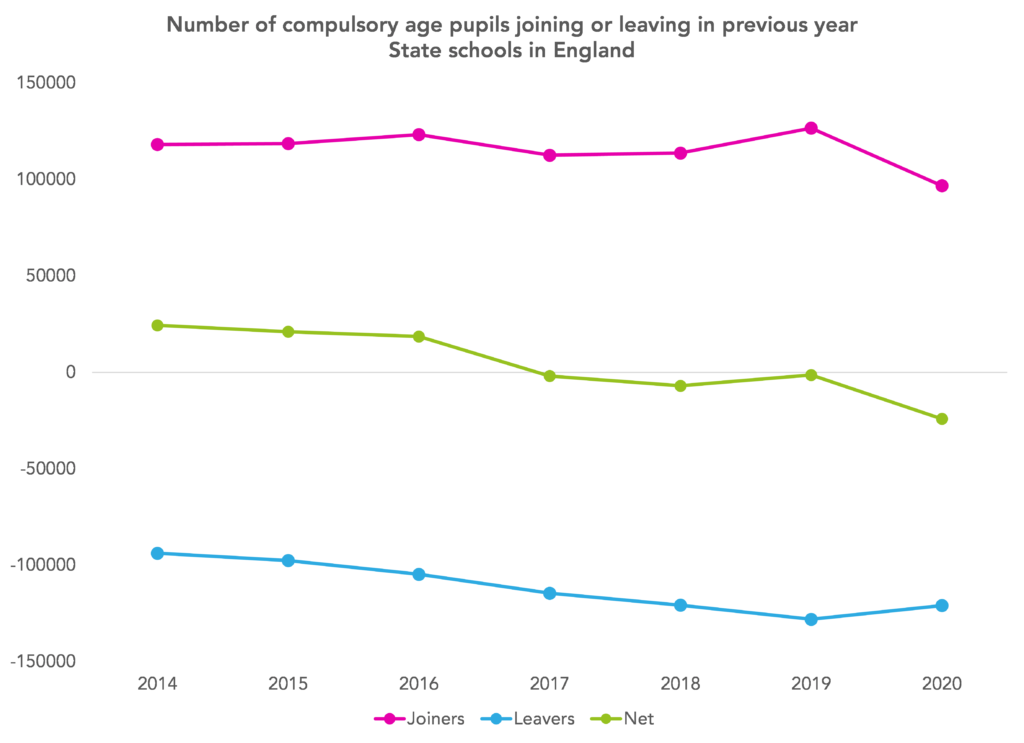
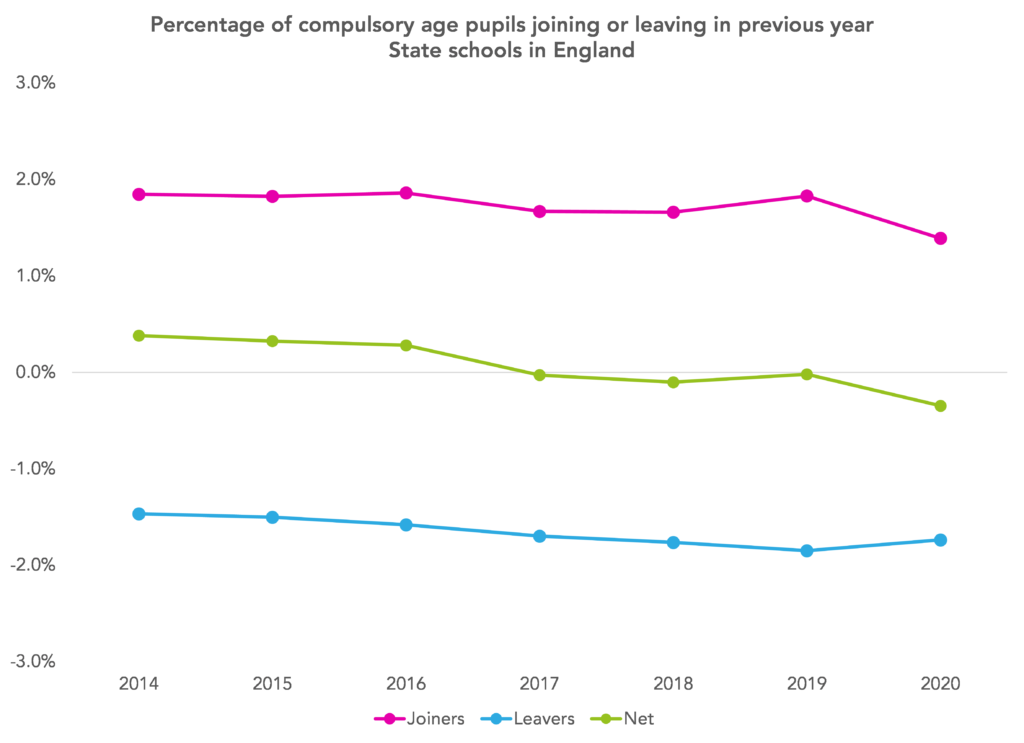
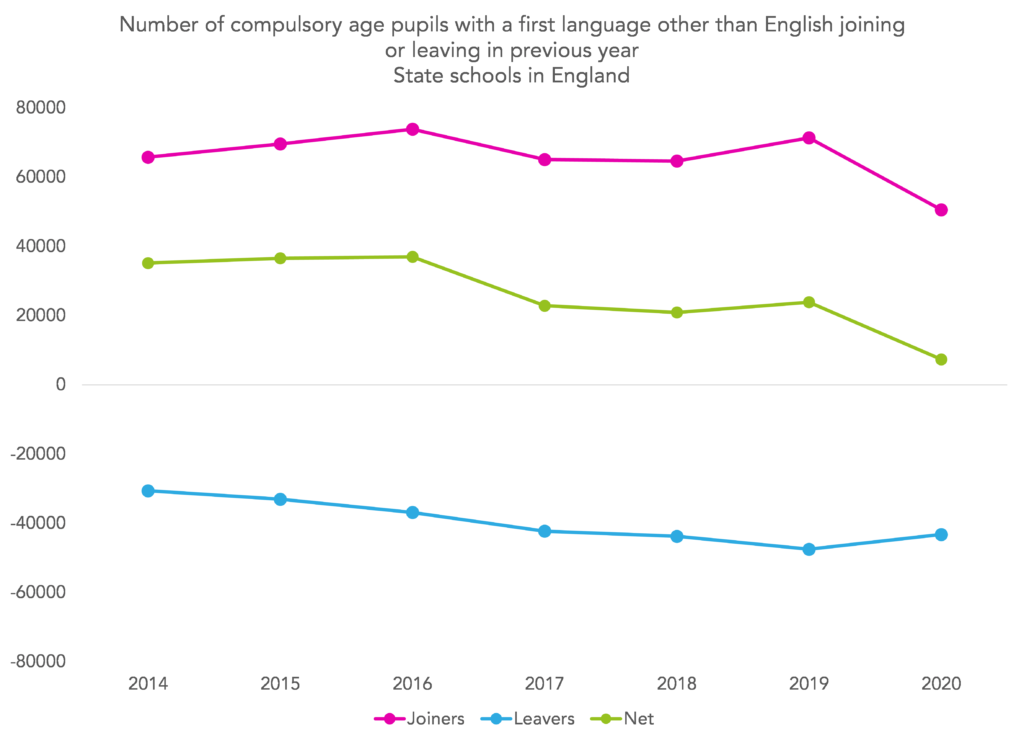

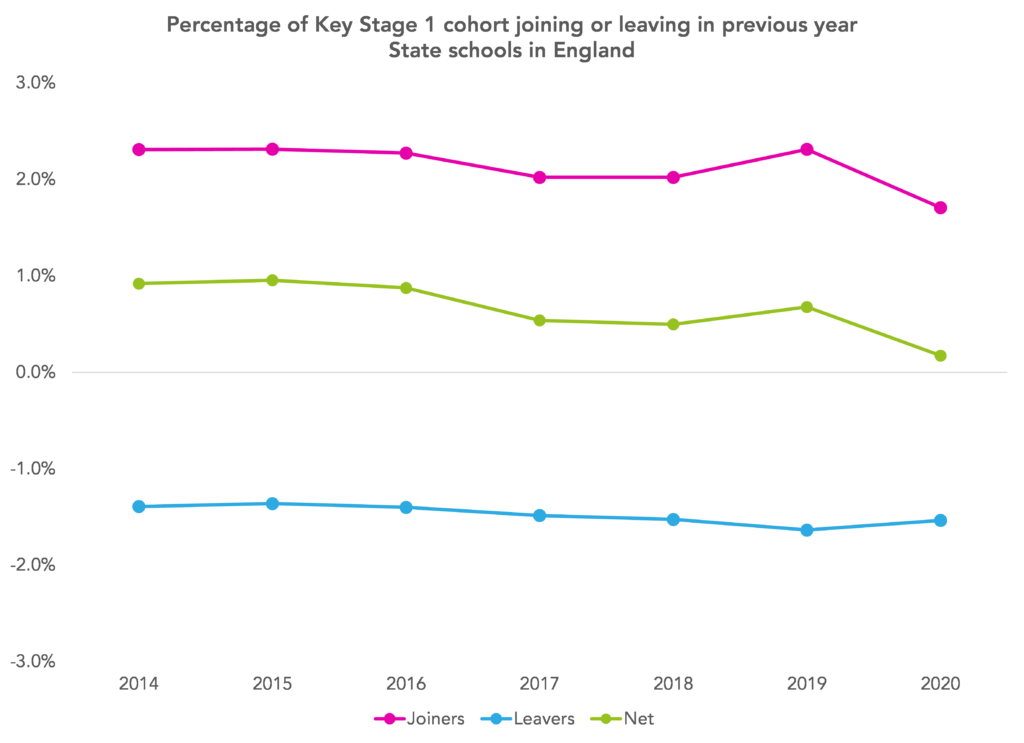
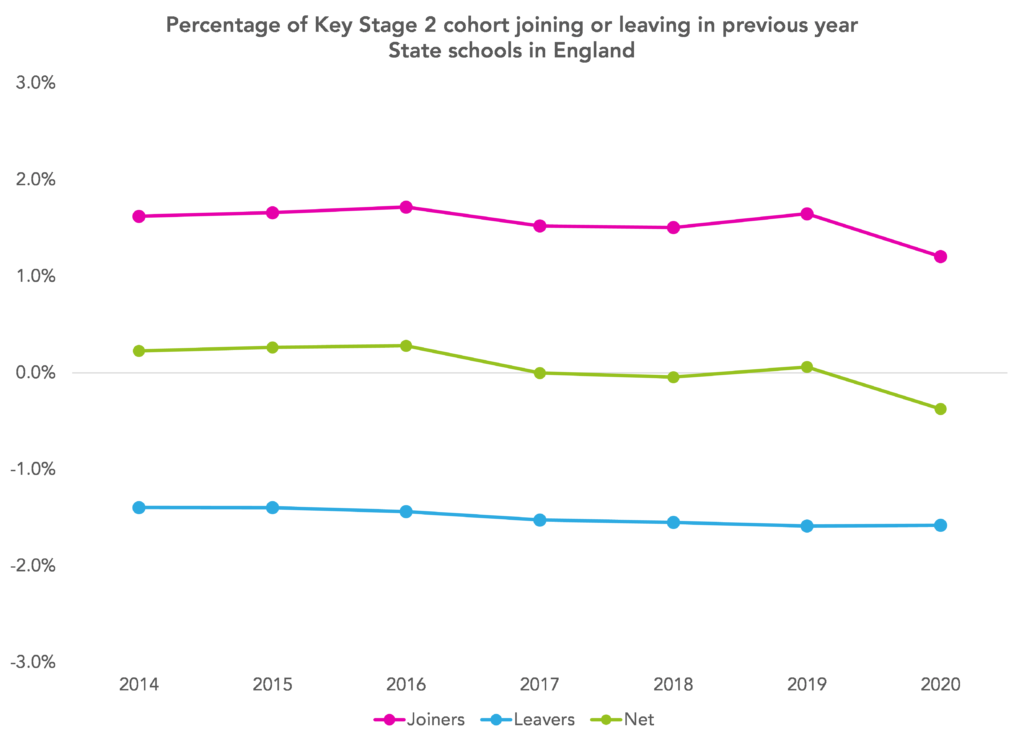
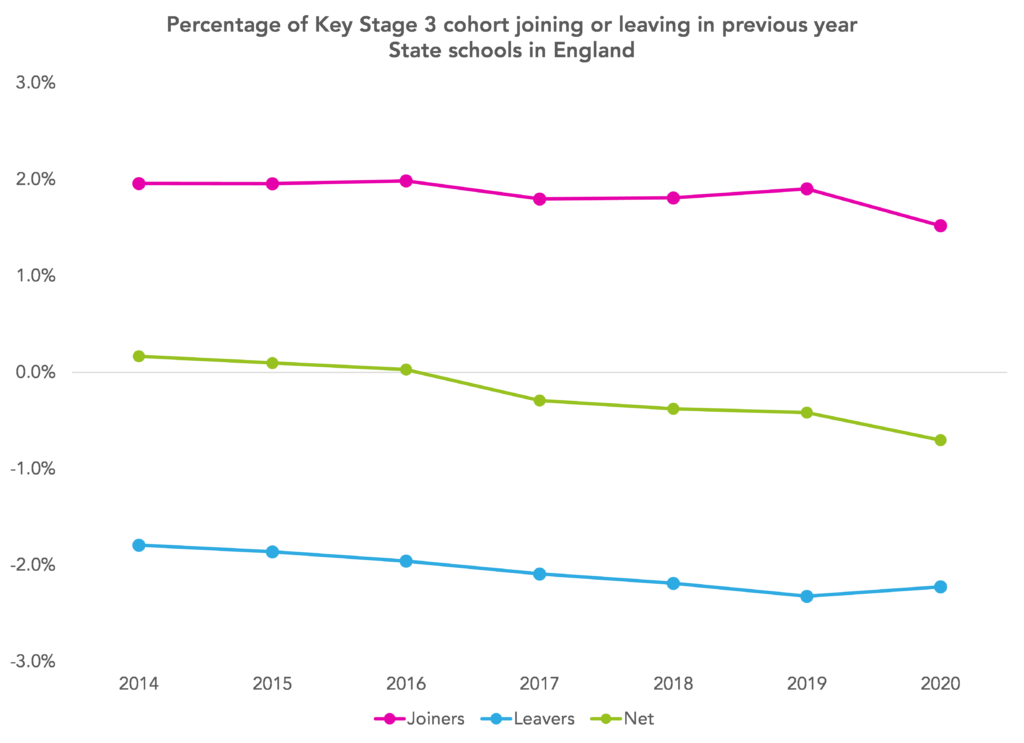

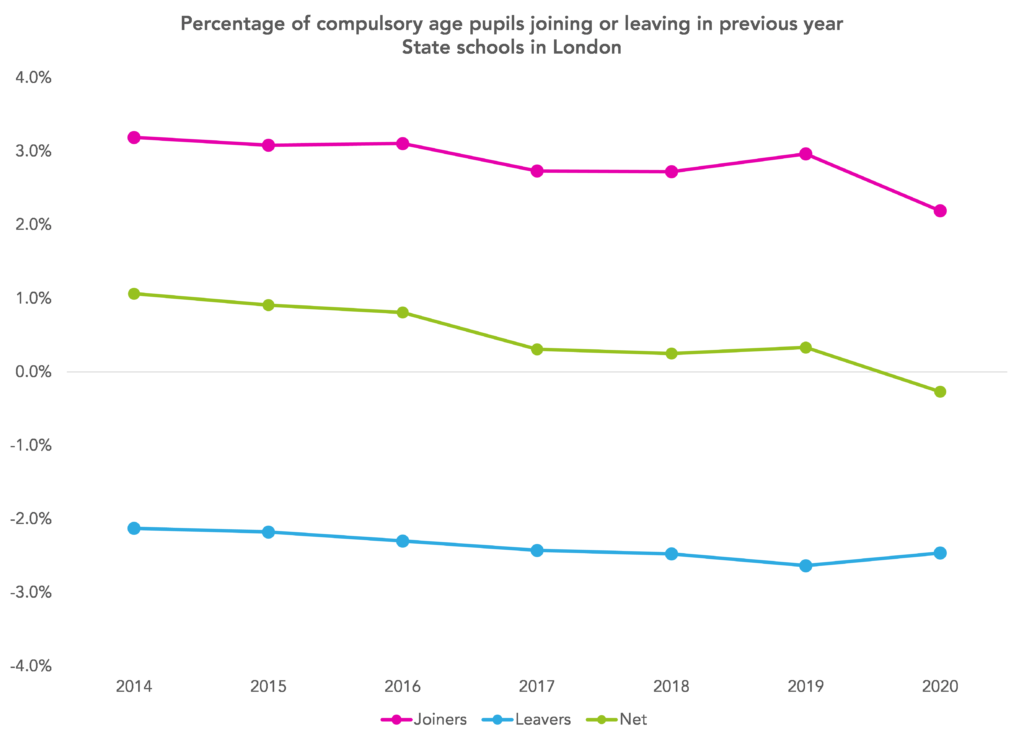
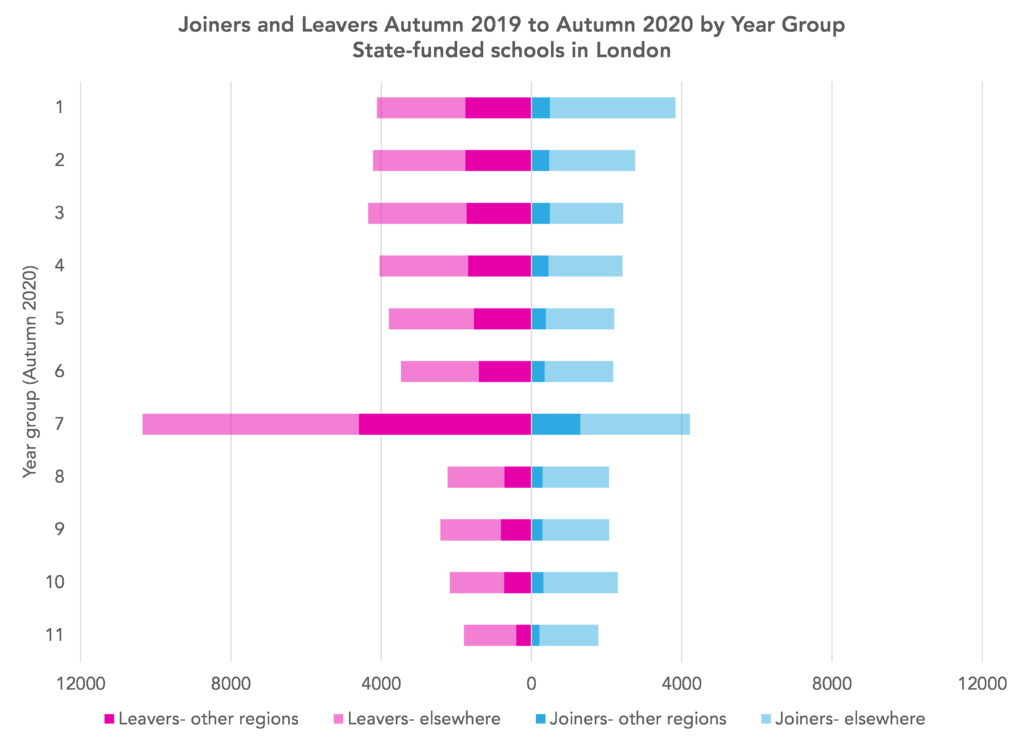






Leave A Comment